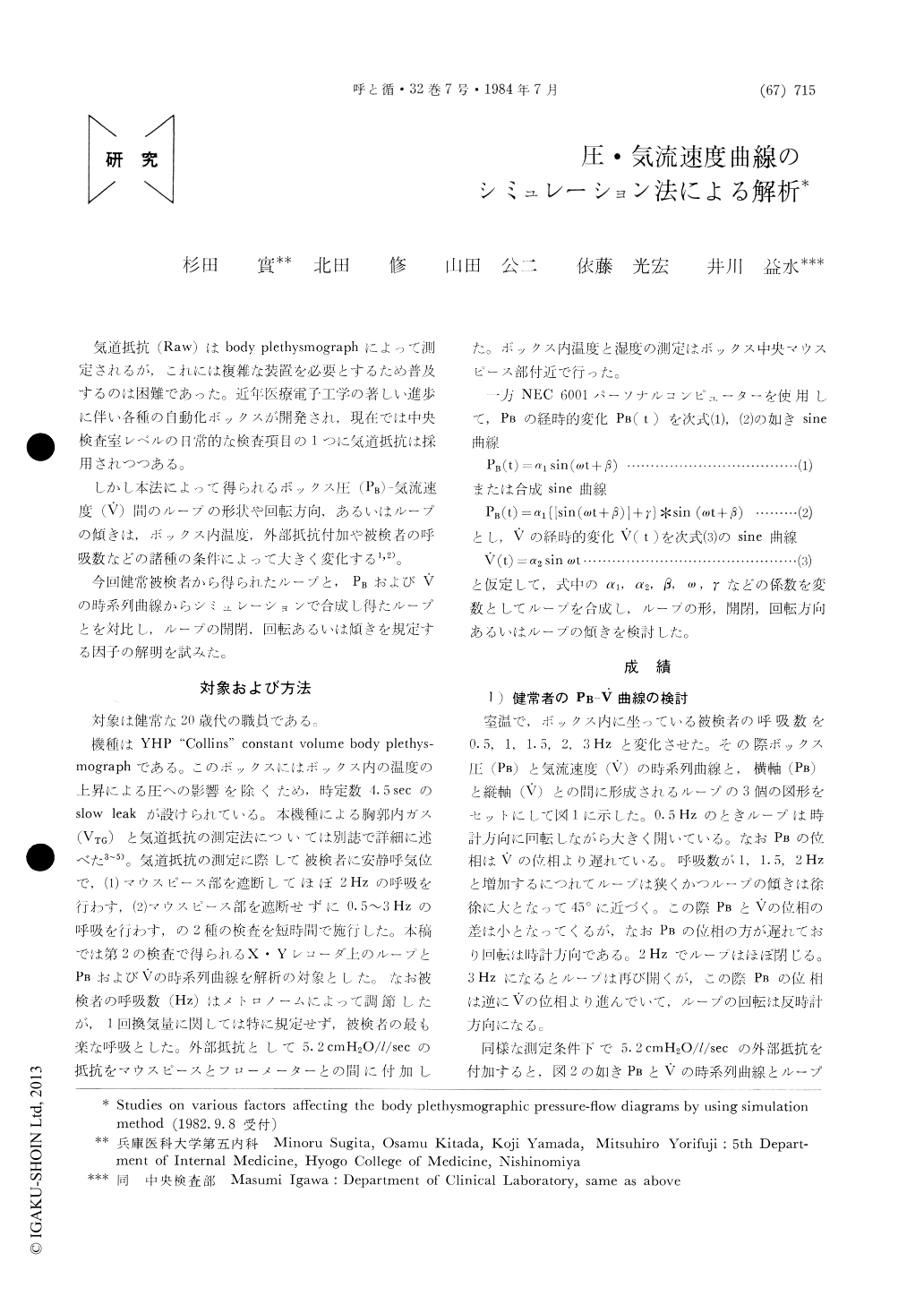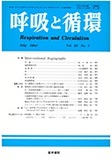Japanese
English
- 有料閲覧
- Abstract 文献概要
- 1ページ目 Look Inside
気道抵抗(Raw)はbody plethysmographによって測定されるが,これには複雑な装置を必要とするため普及するのは困難であった。近年医療電子工学の著しい進歩に伴い各種の自動化ボックスが開発され,現在では中央検査室レベルの日常的な検査項目の1つに気道抵抗は採用されつつある。
しかし本法によって得られるボックス圧(PB)—気流速度(V)間のループの形状や回転方向,あるいはループの傾きは,ボックス内温度,外部抵抗付加や被検者の呼吸数などの諸種の条件によって大きく変化する1,2)。
The aim of the present paper was to make a comparison between the loops obtained by plethys-mographic techniques from the normal subjects and the simulated loops by analogue computer for clarifying the mechanism of changing the rotation, the width, the direction of long axis and the slope of the loops.
Airway resistance was assessed by constant volume body plethysmograph (Hewlett-Packard). The subject was instructed to pant with the breathing frequency of 0.5 to 3Hz with an arbitrary tidal volume around a lung volume close to their func-tional residual capacity. Added resistance of 5.2cm H2O/l/sec was interposed between the flow meter and the subject's mouth.
Various causes such as the breathing frequency, added resistance and temperature differences between inspired and expired gas might result in the formation of loops in the box pressure vs. flow diagram. Judging from box pressure vs. flow curvesand their isolated recordings against time showed that the rotation running counterclockwise or clockwise and the width of a loop were influenced by a phase lag between two separate recordings against time, and that a loop became linear when box pressure and flow were in phase. The slope of a loop became to be close to the horizontal asxi (the box pressure axis) and the waves of flow recor-ding against time became to be flat when resistance was added outside the subject's mouth.
These phenomena were confirmed by the NEC 6001 analogue computer. Loop formation by analogue computer was attempted on the assump-tion that box pressure and flow against time during respiratory cycle varied with a sine wave or a modified sine wave pattern. The rotation, the width, the direction of long axis and the shape of a loop was affected by a phase lag. However, the slope of a loop was decided by the ratio of the maximal difference of flow over the maximal difference of pressure.
The shape of loops resulted in a line, an elliptic shape and a circle by assuming that box pressure and flow during respiratory circle varied as sine wave function of time. A figure 8 shaped and a figure S shaped pressure vs. flow diagram were obtained by analogue computer on the assumption that box pressure and flow changed as modified sine wave function of time.

Copyright © 1984, Igaku-Shoin Ltd. All rights reserved.


